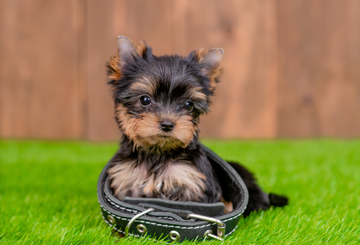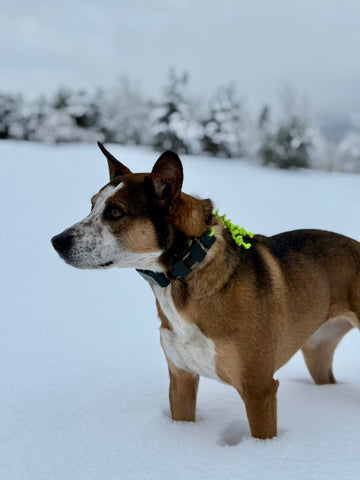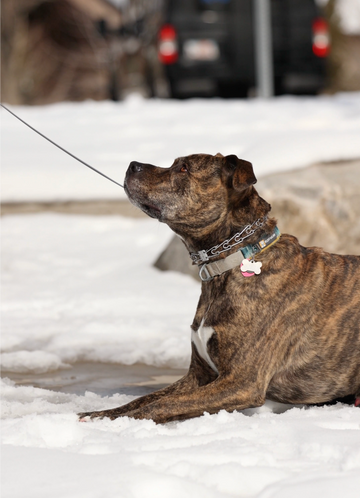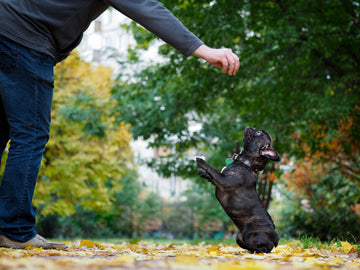One of the most controversial things about owning a dog is what they wear. From collars and harnesses to boots and coats, anything you put on your dog you’re bound to find someone with big opinions about it.
In our next series we will be discussing tools used in the dog community, what are they used for vs what were they designed for, and how we recommend using them.
The first tool we will talk about is a flat, or regular, collar. Flat collars are the most seen tool on dogs. Typically made from nylon, leather, or other durable materials, they fasten around a dog’s neck and are often used to hold ID tags and attach a leash. They're simple, widely available, and come in endless styles, colors, and patterns.
In this post we will be covering:
- What the flat call was designed for.
- What it is used for now.
- Our recommendations.
What was the flat collar designed for?
At its core, the flat collar was designed as a basic way to identify and control a dog. It provides a place to clip tags and attach a leash for walking. However, it’s important to understand that a flat collar is not always the best training tool or a primary method for leash control—especially for dogs that pull or lunge. The pressure a flat collar can place on a dog’s neck, especially with repeated strain, can contribute to injuries like tracheal damage, thyroid issues, or even behavioral stress responses. This is why picking the right collar is imperative not only to your dog’s health but also to the success of your communication with the dog.
What is it used for now?
Today, many dog owners continue to use flat collars for everyday wear. They’re easy to put on and take off and are often required in public spaces or boarding facilities for ID purposes. When taught correctly, the flat collar can be a great tool to tactilely (communication by touching) communicate with your dog.
Our recommendation.
We suggest using a flat collar primarily for identification, walking, or training. We prefer a belt buckle style of fastener as they are more reliable and less likely to break like some of the plastic clip-in buckle. If you plan on walking or training your dog in a flat collar, we recommend a minimum of one inch for most breeds over 30lbs. The Standard Collar by Bridgeport K9 is a perfect example of a safe collar for dog’s 30lbs+. Smaller dogs we recommend half inch. The purpose of having a little bit wider collar is to help distribute pressure and keep protect the dog’s neck. The thinner the collar is the more intense and direct the pressure is to a particular area of the neck. Because of this, you are much more likely to damage the trachea or the skin around the neck.
Even though the wider collar is safer for your pup, we don’t recommend using this type of collar if your dog pulls or lunges. Please seek guidance from a canine professional to help you and your dog communicate well enough you can use a flat collar.
Stay tuned for our next post, where we’ll take a closer look at prong/pinch collars: the good, the bad, and how to pick the right one for your pup.





